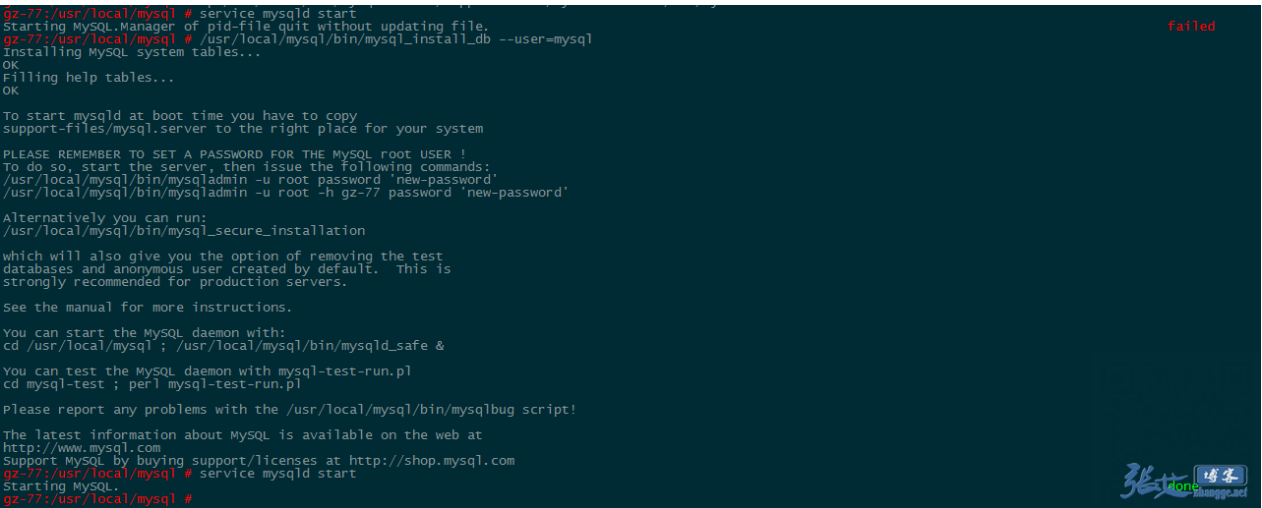When I went to work this morning, I found that I couldn’t access the website built by WordPress. I reported the following error:
Error establishing a database connectionQuickly log on to your own Alibaba cloud server (centos7.4) to view the MySQL service. Through PS – EF | grep mysql, you find that there is no MySQL process
The first thing to do is to check the MySQL log and find the corresponding error exception through VI/var/log/mysqld.log
2018-12-26T02:06:16.148626Z 0 [Note] Event Scheduler: Purging the queue. 0 events
"/var/log/mysqld.log" 623L, 59293C
2019-02-01T07:56:07.052989Z 0 [Note] InnoDB: GCC builtin __atomic_thread_fence() is used for memory barrier
2019-02-01T07:56:07.052991Z 0 [Note] InnoDB: Compressed tables use zlib 1.2.11
2019-02-01T07:56:07.052994Z 0 [Note] InnoDB: Using Linux native AIO
2019-02-01T07:56:07.053336Z 0 [Note] InnoDB: Number of pools: 1
2019-02-01T07:56:07.053443Z 0 [Note] InnoDB: Using CPU crc32 instructions
2019-02-01T07:56:07.055009Z 0 [Note] InnoDB: Initializing buffer pool, total size = 128M, instances = 1, chunk size = 128M
2019-02-01T07:56:07.055061Z 0 [ERROR] InnoDB: mmap(137428992 bytes) failed; errno 12
2019-02-01T07:56:07.055067Z 0 [ERROR] InnoDB: Cannot allocate memory for the buffer pool
2019-02-01T07:56:07.055073Z 0 [ERROR] InnoDB: Plugin initialization aborted with error Generic error
2019-02-01T07:56:07.055081Z 0 [ERROR] Plugin 'InnoDB' init function returned error.
2019-02-01T07:56:07.055085Z 0 [ERROR] Plugin 'InnoDB' registration as a STORAGE ENGINE failed.
2019-02-01T07:56:07.055088Z 0 [ERROR] Failed to initialize builtin plugins.
2019-02-01T07:56:07.055091Z 0 [ERROR] Aborting
2019-02-01T07:56:07.055108Z 0 [Note] Binlog end
2019-02-01T07:56:07.055159Z 0 [Note] Shutting down plugin 'CSV'
2019-02-01T07:56:07.055380Z 0 [Note] /usr/sbin/mysqld: Shutdown completeIt can be seen that there is not enough memory, resulting in the oom problem. Continue to view the memory with free – M and find the following:
free -m
total used free shared buff/cache available
Mem: 992 270 107 50 614 496
Swap: 0 0 0There is not enough memory, only 107m space is available, swap free space is 0
So there are two solutions:
1: Modify the/etc/my.inf file to delete InnoDB_ buffer_ pool_ Size down
innodb_buffer_pool_size = 32M2: Add swap file
For specific steps, see Adding swap swap space on CentOS 7
So far, the problem has been solved
—————————————–
There is no fear of problems, the solution is very important




